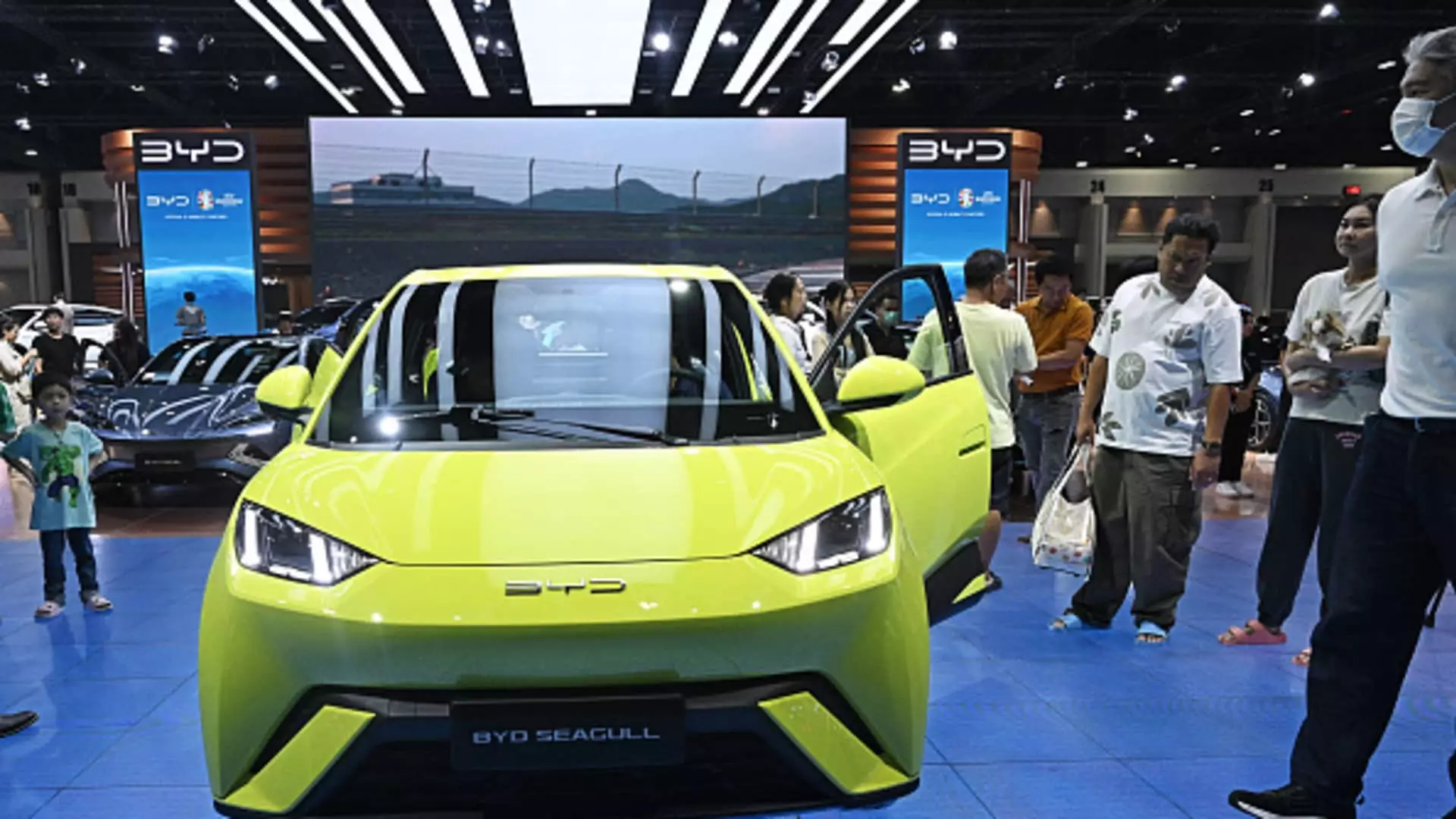The European Union is set to unveil its tariff rate plan for Chinese electric vehicles in response to the increasing concerns over low-priced, subsidized imports. While the EU currently imposes a standard 10% duty on imported EVs, there are speculations that the tariffs for Chinese EVs could be raised starting on July 4. Analysts predict that the tariffs could potentially be increased to a range of 25-50%, reflecting a significant jump from the current rate of 10%.
Senior investment strategists, such as Anthony Sassine from KraneShares, anticipate that the tariff rates may fall between 10% and 20%, but the recent trends in the European Parliament elections could push the rates towards the higher end of the spectrum. Ursula von der Leyen, president of the European Commission, has been vocal about the need for a “de-risking” approach from Beijing, especially in light of the subsidies provided to Chinese EV makers.
Despite the looming threat of increased tariffs, experts believe that Chinese manufacturers have honed their efficiency and competitiveness to a level where these tariffs may not significantly impact their pricing strategies. The Chinese EV industry has thrived on incentives and government support, leading to concerns of overcapacity in markets such as the U.S. and Europe. Energy Secretary Jennifer Granholm has already warned about the potential flood of Chinese EVs into the U.S. market, prompting the Biden administration to raise tariffs to 100%.
Chinese EV makers, including Xpeng, BYD, and Nio, have been actively expanding their presence in Europe despite the ongoing trade disputes. BYD announced plans to build a new factory in Hungary, while Chery entered a joint venture with Spain’s Ebro-EV Motors to develop new EV models. Analysts like Cedomir Nestorovic from ESSEC Business School have noted the increasing interest of Chinese manufacturers in setting up factories in Europe to circumvent potential tariffs.
While the impact of EU tariffs on Chinese electric vehicles is expected to be minimal in Europe, the situation could be different in the U.S., where stringent tariffs have already been imposed. Sassine mentions that Chinese automakers are exploring various options, such as setting up factories in Europe, to mitigate the effects of tariffs. Despite the uncertainties surrounding the trade landscape, Chinese manufacturers remain optimistic about their ability to navigate through the challenges posed by tariffs.
The EU’s decision to increase tariffs on Chinese electric vehicles reflects the growing concerns over subsidized imports and their potential economic threat to the local EV industry. While the exact tariff rates are yet to be finalized, the implications of these tariffs on Chinese manufacturers and their expansion strategies remain significant. It will be crucial for both sides to find a balance between protecting domestic industries and fostering a competitive global market for electric vehicles.


Leave a Reply